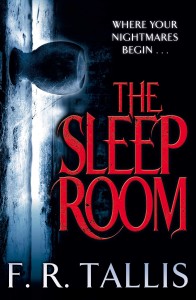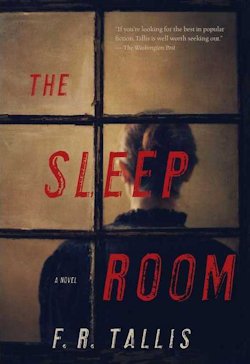It’s no slight on life, but what an exhausting enterprise existence is!
If a single day goes by without some occurrence of angst, anger, regret, fear or frustration, we count ourselves lucky. But let’s face it: this is a rarity. Life is full of strife. From time to time, horrible things just happen to happen, and on other occasions, we simply wake up on the wrong side of the bed.
That said, it doesn’t much matter what’s bothering or annoying us, what’s upsetting or distressing us: everything tends to look better after a good night’s sleep. Better, or at least very least different. Taking your recommended daily allowance of eight hours under the covers can help us see almost anything in a new light.
And why not extrapolate that out? If a short snooze can essentially obliterate the blues, why not assume that a longer period of unconsciousness might stand a chance of addressing much more serious and ingrained issues and conditions than those we face on a day-to-day basis?
People have, in the past. Yet there are very real reasons why this species of treatment isn’t commonplace in our age—complications that The Sleep Room by F. R. Tallis in part examines.
The precise mechanisms underlying the beneficial effects of narcosis were not understood; however, in his paper, Maitland had proposed that prolonged sleep might result in the disintegration of personality, allowing—at some later stage—for a healthier reconstitution. He likened the process to breaking and re-setting a leg. His advocacy of ECT as an additional component of treatment was based on the idea that it could hasten recovery by obliterating unpleasant memories.
Whatever his methods, Dr. Hugh Maitland is a hugely respected figure in Britain in the 1950s of this fiction. The head of the department of psychological medicine at Saint Thomas’s, he also consults for three other hospitals, and somehow finds the time to nurture something of a pet project as well.
Welcome to Wyldehope: a tiny countryside clinic revolving around a chamber wherein six disturbed women—variously “orphaned, disowned, forgotten [and] lost”—have been kept chemically sedated for a number of months. When Maitland offers James Richardson a position at the far-distant facility, he practically jumps at the chance. He parts ways with his casual companion and takes the first available train.
From this point on, Tallis’s tenth novel is all atmosphere. Here’s our aspirational protagonist arriving in Darsham:
I stepped down onto a platform shrouded in mist. Stressed metal groaned, flashes of firelight emanated from the cab, and glowing cinders formed chaotic constellations above the smokestack. The effect was vaguely diabolical.
And this is Richardson reflecting on his first impressions of the sleep room:
I was reminded about something I had read many years before about the healing rituals of the ancient Greeks. The sick and troubled in those remote times were frequently instructed by a holy man to spend a night in an underground temple. There, they would have a dream that would cure them. It seemed to me that the sleep room was a modern-day equivalent.
I was familiar with sleep laboratories. I had studied and worked in Cambridge and Edinburgh and they all had in common a strange, unreal atmosphere. But the sleep room at Wyldehope was different. The atmosphere was more intense, almost religious. It evoked feelings in me that I associated with certain churches—experienced in solitude and usually at dusk. In the hush and the shadow that enveloped those six beds were unexpected registers and suggestions of something beyond the reach of the senses.
Ever the rationalist, Richardson wonders whether what he’s heard and felt is all in his head, but when one of his most promising patients takes a sudden turn for the worse, and a troubled nurse goes missing in the mist, it becomes abundantly clear that something as sinister as it is inexplicable has made Wyldehope its home.
 Tallis makes the absolute most of this section of the text, obfuscating the other that haunts the property for as long as humanly possible. It is out of sight, certainly… but out of mind? Not quite. The ghost of Wyldehope exists strictly on the periphery of The Sleep Room, an unknowable entity which slowly but surely worries its insidious way into our subconscious.
Tallis makes the absolute most of this section of the text, obfuscating the other that haunts the property for as long as humanly possible. It is out of sight, certainly… but out of mind? Not quite. The ghost of Wyldehope exists strictly on the periphery of The Sleep Room, an unknowable entity which slowly but surely worries its insidious way into our subconscious.
The author handles all this wonderfully well, with measure and gentle suggestion. Even when the spectre takes centre stage, it is a thing “half seen, half imagined” In fact, to repurpose our protagonist’s reaction, “I am still not sure what it was that I saw […] A shape behind the glare, an outline that encouraged the brain to supply missing details.” No more than that, and no less, neither now nor ever again. Yet it—whatever it is—feels as real to the reader as Richardson.
In the interim, intrigue and mystery are made manifest; Tallis creates and maintains an impeccable sense of suspense which alternately thrills and chills. It’s no surprise that The Sleep Room comes from an Edgar Award nominee—the Edgars honour the finest mystery fiction in the business, and though Tallis’s text has a speculative edge, it’s best-in-class by most any measure.
There is talk of positioning this author as the Doctor of Fear, and indeed, Tallis is well qualified to take to task the arts of “somatic psychiatry.” His day job is as a clinical psychologist—with, I presume, a PhD—and he’s clearly researched, in depth, the subjects here addressed. But this calculated phrase is apposite in other ways. Very much in the mode of a medical professional, Tallis induces a state of controlled tension early on in The Sleep Room, doses us appropriately, and proceeds to carefully monitor and moderate our exposure to any external stimuli that stand to affect our experience adversely.
When we awaken, it’s as if nothing dramatic has happened. But something has. Something shocking.
The Sleep Room is a short novel—with a few cups of coffee and something soft to hold onto, you could reasonably read it in a single session. You could and you should, because F. R. Tallis’s new book is as satisfying as it is alarming.
The Sleep Room is available September 12 from Pegasus.
Niall Alexander is an erstwhile English teacher who reads and writes about all things weird and wonderful for The Speculative Scotsman, Strange Horizons, and Tor.com, where he contributes a weekly column concerned with news and new releases in the UK called the British Genre Fiction Focus, and co-curates the Short Fiction Spotlight. On rare occasion he’s been seen to tweet, twoo.










